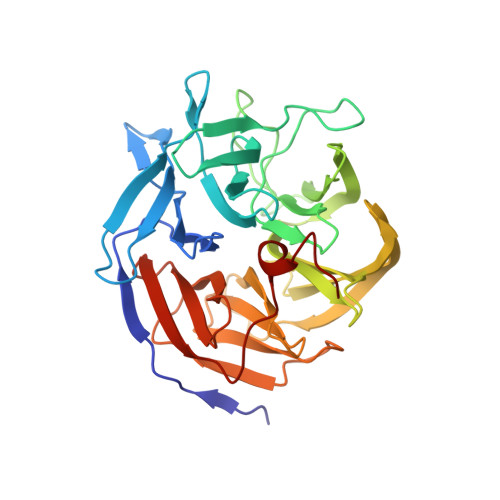X-ray structure of perdeuterated diisopropyl fluorophosphatase (DFPase): perdeuteration of proteins for neutron diffraction.
Blum, M.M., Tomanicek, S.J., John, H., Hanson, B.L., Ruterjans, H., Schoenborn, B.P., Langan, P., Chen, J.C.(2010) Acta Crystallogr Sect F Struct Biol Cryst Commun 66: 379-385
- PubMed: 20383004
- DOI: https://doi.org/10.1107/S1744309110004318
- Primary Citation of Related Structures:
3KGG - PubMed Abstract:
The signal-to-noise ratio is one of the limiting factors in neutron macromolecular crystallography. Protein perdeuteration, which replaces all H atoms with deuterium, is a method of improving the signal-to-noise ratio of neutron crystallography experiments by reducing the incoherent scattering of the hydrogen isotope. Detailed analyses of perdeuterated and hydrogenated structures are necessary in order to evaluate the utility of perdeuterated crystals for neutron diffraction studies. The room-temperature X-ray structure of perdeuterated diisopropyl fluorophosphatase (DFPase) is reported at 2.1 A resolution. Comparison with an independently refined hydrogenated room-temperature structure of DFPase revealed no major systematic differences, although the crystals of perdeuterated DFPase did not diffract neutrons. The lack of diffraction is examined with respect to data-collection and crystallographic parameters. The diffraction characteristics of successful neutron structure determinations are presented as a guideline for future neutron diffraction studies of macromolecules. X-ray diffraction to beyond 2.0 A resolution appears to be a strong predictor of successful neutron structures.
- Blum Scientific Services, Ledererstrasse 23, 80331 Munich, Germany.
Organizational Affiliation:

















